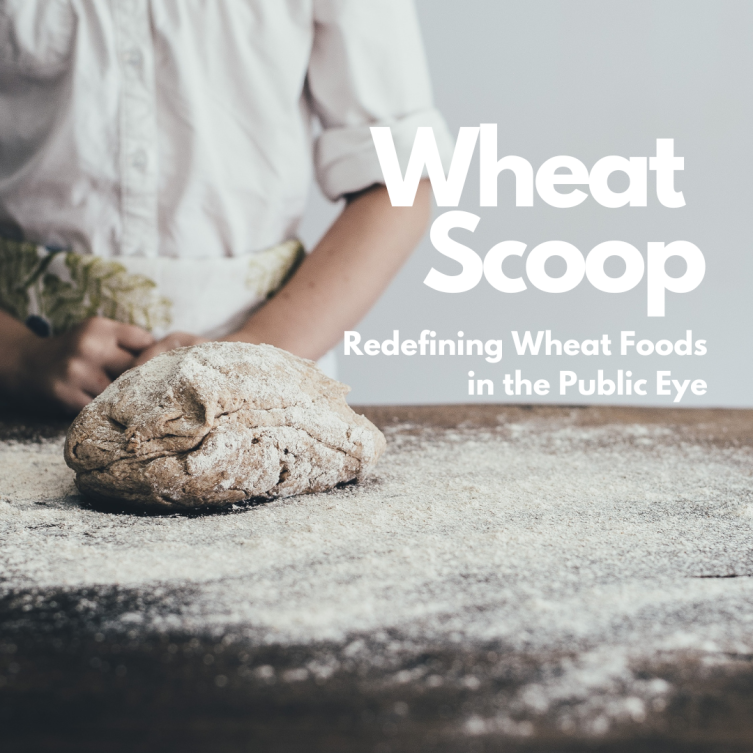Wheat foods get caught in a crossfire of fad diets and misinformation ranging from low-carb diets like Atkins to pushes for gluten-free foods following Wheat Belly. Luckily, producers have a powerful ally to combat these negative trends – the Wheat Foods Council, the industry organization that works to fuel demand for U.S. wheat, set the record straight on enriched wheat foods and bring in expert voices to consumer-influencing conversations.
Tim O’Connor, president of the Wheat Foods Council, recently sat down with Aaron Harries, Kansas Wheat vice president of research and operations, for an episode of the “Wheat’s on Your Mind” podcast to discuss how the organization is targeting “wheat influencers” to redefine wheat foods in the public eye.
“We work to increase demand for the 50 percent of wheat that’s produced in the U.S. that’s not exported,” O’Connor said. “It stays here in this marketplace, and we have to deal with the challenges and the opportunities that the U.S. marketplace presents us.”
The Wheat Foods Council is an industry-wide partnership dedicated to increasing domestic wheat foods consumption through nutrition information, research, education and promotional programs. The Council has a unique membership, comprised of the entire wheat value chain, including state wheat commissions supported by wheat checkoff dollars.
“Here we have everybody from the growers, the state wheat commissions, the millers, the bakers, the ingredient suppliers, the life science companies. Everyone in the value chain can participate in the Wheat Foods Council,” O’Connor said. “Because the world looks different to a wheat grower than it does to a miller or a baker. When we can blend all of those points of view together to understand the challenges each sees, we can find a solution that’s a win-win for everyone.”
O’Connor and Harries discussed how the Council currently has two major priorities for their work – tackling misperceptions about enriched wheat foods and leveraging influencers in the fitness and culinary sectors to reshape public perception.
Enriched wheat flour is fortified with essential vitamins and minerals. This enrichment has provided major health benefits to consumers and represents the majority of wheat foods products produced in the United States. Still, enriched wheat flour is largely misunderstood or misrepresented in nutritional information online.
“You can find thousands of articles on wonderful things about whole wheat,” O’Connor said. “But once you start looking for information on enriched wheat flour, it starts to get pretty negative very fast.”
Addressing this misperception, along with the larger challenge of combatting low-carb fad diets, requires a very strategic approach. But the Wheat Foods Council is up to the challenge, as they work to turn those messages around by working with groups that influence consumers – chefs and fitness professionals. Targeting these influencers offers more credibility than a seeming echo chamber of the wheat industry positively promoting their products. Plus, it is also more financially efficient because the organization can work with influencers who reach millions of people.
The first group that the Wheat Foods Council targets is fitness professionals, including nutritionists and others who educate consumers about exercise, nutrition, weight loss, weight management and other related topics. Altogether, there are more than 300,000 of these professionals, who collectively reach several million consumers every day. The organization started by conducting surveys to better understand what information these groups gave consumers, finding that they promoted a lot of fad diets and misinformation.
“The majority of who they see are people who are overweight and out of shape and have decided to do something about it,” O’Connor said. “And the first thing they would do would be put them on a low-carb diet because they believed strongly that this was the way to manage and lose weight.”
In addition to fitness professionals, the Wheat Foods Council also decided to target the chefs who set the menus at major restaurant chains or work at food product companies. This includes chefs that set the menus at “industry institutional theaters” like college campuses, corporate campuses, sports venues and other places where people go every day and eat what is on the menu.
The approach to reach these influential groups is similar – meeting these folks where they are and providing them with information on the nutritional value of wheat foods and how this ingredient can help meet consumer wants.
For fitness professionals, the Wheat Foods Council conducts webinars that provide continuing educational credits, pulling in experts like Nancy Clark, an Olympian turned sports nutritionist, and Dr. Brett Carver, a wheat breeder at Oklahoma State University. For chefs and other decision-makers, the Council brings these experts to custom educational programs at places like the Culinary Institute of America. For both audiences, the Council also brings its expertise to industry conferences and provides educational material influencers can use on their social media channels.
“We’ve had tremendous success in getting high-volume restaurant chains and high-volume food manufacturers coming to our events and going home with a whole different perspective on how to use wheat foods,” O’Connor said. “They feed millions of people every day. We want them to see wheat foods as something that they want to consume, something that they value rather than buy into many of the trends that have vilified wheat foods.”
This work requires a strategic approach and complex conversations, but at the end of the day, the Wheat Foods Council is providing simple and straightforward answers to consumer questions like: Is this good for me and my family? Do I want to serve this and eat this and feed it to my kids, or is this something I want to stay away from?
Each piece of education is a well-executed play from the Wheat Foods Council’s strategic playbook – driving demand for U.S. wheat and bringing a positive image of wheat back to the American dinner table. And it would not be possible without the support of the entire wheat industry, down to the individual wheat producer who pays into their state checkoff each harvest.
“This work is important to growers; it builds a more vibrant, dynamic marketplace for the wheat that they grow,” O’Connor said. “They need to know that the money they’re putting into these check-off programs is being utilized to advance the work of the Wheat Foods Council along with the other organizations that work on international marketing and policy work on behalf of the industry.”
Listen to the full conversation with Tim O’Connor and all other episodes of the “Wheat’s on Your Mind” podcast at wheatsonyourmind.com.



